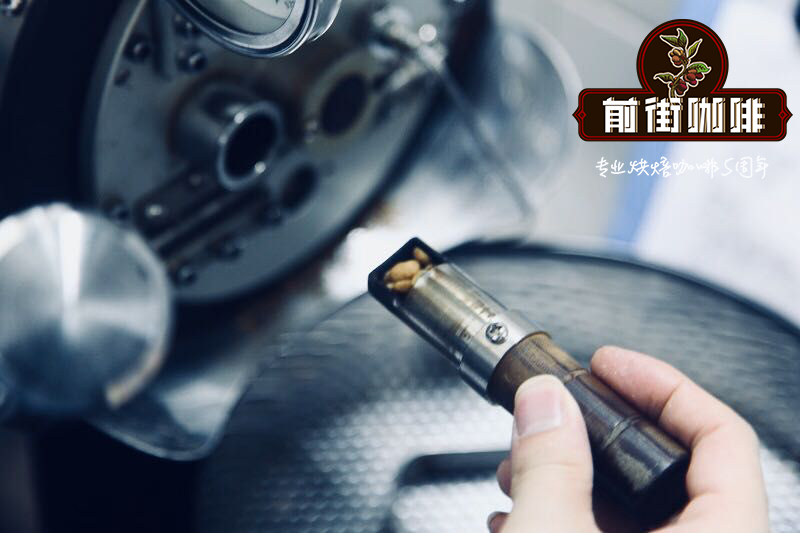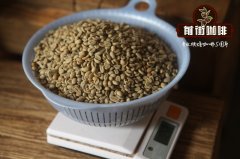What is the flavor and taste of AA grade water washed beans from Qilinjia treatment Plant in Kirin Yaga, Kenya?

Professional coffee knowledge exchange more coffee bean information please follow the coffee workshop (Wechat official account cafe_style)
What are the flavor and taste characteristics of AA grade water washed beans in Kirin Yaga production area of Kenya? How do you drink it?
Product name: Kenya Kirinyaga Kiringa AA Washed
Production area: Kirinyaga
Processing plant: Kiringa Kirin Yaga production area
Grade: AA
Treatment: Kenyan washing
Flavor description: blackcurrant, sweet peach, citrus, sucrose, smooth and delicate taste
Although Kenya and Ethiopia are adjacent to each other and both are big coffee producers in Africa, there are obvious differences in coffee varieties and flavors. Kenyan coffee is mainly characterized by its strong berry aroma, grapefruit and black plum acidity, sugarcane sweetness, layered and moderate mellow, so it is loved by many coffee lovers.
Because the equator runs through the middle of the country, and the overall border is within 10 degrees north and south latitude, Kenya has two rainy seasons every year and can harvest coffee twice. Coffee is mainly grown in the 1,600-meter volcanic area from the capital Nairobi to the mountains of Kenya, as well as Mount Elgon on the border with Uganda.
The special flavor of Kenyan coffee comes from two unique ways:
A unique variety
Although Kenya has introduced bourbon species, India's Kent, and Jamaica's Blue Mountain Tibica, the world-famous bourbon varieties SL28 and SL34 first appeared in Kenya in the 1930s. These two varieties give Kenyan coffee a unique sour BlackBerry flavor.
Kenyan washing method
Kenyan coffee is famous for its rich layers and clean taste. Its unique Kenyan-style water washing method goes through two water-washing and fermentation procedures, commonly known as "double fermentation". It is a rather complicated but delicate method of raw bean treatment. This treatment is more time-consuming and water-consuming than ordinary water washing, so Kenyan coffee is more expensive, but it is also an indispensable method to create a unique sour flavor and clean taste of Kenyan coffee.
First washing and fermentation
After the coffee cherry harvest, the beans will first be picked by the specific gravity of the water flow; the principle is that the coffee fruit itself is screened by the difference in density and quality; the coffee beans with high density (heavy weight) will sink into the water, while the coffee beans with low density will float. The coffee fruits with high mature quality have high density, so they are screened out for further treatment.
After the high-quality and ripe fruits are selected, the peel is removed, washed and soaked, and the pectin mucus attached to the outer layer of raw beans is fermented. Pectin has natural sugars and alcohols, which play an important role in the development of sweetness, acidity and overall flavor of coffee.
The fermentation time is as long as 24 hours, and after fermentation, 80% of the pectin is removed, leaving only the flavor in the coffee beans.
The second washing and fermentation
Then enter the second washing fermentation process. After the coffee beans in the previous stage are cleaned, they are soaked in water again for 24 hours. This process increases proteins and amino acids, and the acidity of coffee beans creates complex and delicate layers of taste.
Finally, remove all the remaining pectin and move the coffee beans to a high scaffolding for sun drying, depending on the weather, which usually takes about 10 days.
Important Notice :
前街咖啡 FrontStreet Coffee has moved to new addredd:
FrontStreet Coffee Address: 315,Donghua East Road,GuangZhou
Tel:020 38364473
- Prev

What are the flavor and taste characteristics of AA washed beans from the Kay San Garry treatment plant in Kenya?
Professional coffee knowledge exchange more coffee bean information please follow the coffee workshop (Wechat official account cafe_style) Kenya Kay San Garry processing plant what is the flavor and taste characteristics of AA washed beans? Manor name: Kenya Embu production area Kai San Garri treatment plant AA treatment: Kenyan style washed bean seed: 100% Arabica SL28 SL34 flavor: green plum red Portugal
- Next

What is the flavor and taste of AA grade water washed beans from Qilinjia treatment Plant in Kirin Yaga, Kenya?
Professional coffee knowledge exchange more coffee bean information please follow the coffee workshop (Wechat official account cafe_style) what are the flavor and taste characteristics of AA washed beans from Kirin Yaga processing plant in Kirin Yaga, Kenya? How do you drink it? Product name: Kenya Kirinyaga Kiringa AA Washed production area: Kirinyaga processing plant: Kiringa Kirin Yaga production area grade
Related
- Detailed explanation of Jadeite planting Land in Panamanian Jadeite Manor introduction to the grading system of Jadeite competitive bidding, Red bid, Green bid and Rose Summer
- Story of Coffee planting in Brenka region of Costa Rica Stonehenge Manor anaerobic heavy honey treatment of flavor mouth
- What's on the barrel of Blue Mountain Coffee beans?
- Can American coffee also pull flowers? How to use hot American style to pull out a good-looking pattern?
- Can you make a cold extract with coffee beans? What is the right proportion for cold-extracted coffee formula?
- Indonesian PWN Gold Mandrine Coffee Origin Features Flavor How to Chong? Mandolin coffee is American.
- A brief introduction to the flavor characteristics of Brazilian yellow bourbon coffee beans
- What is the effect of different water quality on the flavor of cold-extracted coffee? What kind of water is best for brewing coffee?
- Why do you think of Rose Summer whenever you mention Panamanian coffee?
- Introduction to the characteristics of authentic blue mountain coffee bean producing areas? What is the CIB Coffee Authority in Jamaica?

